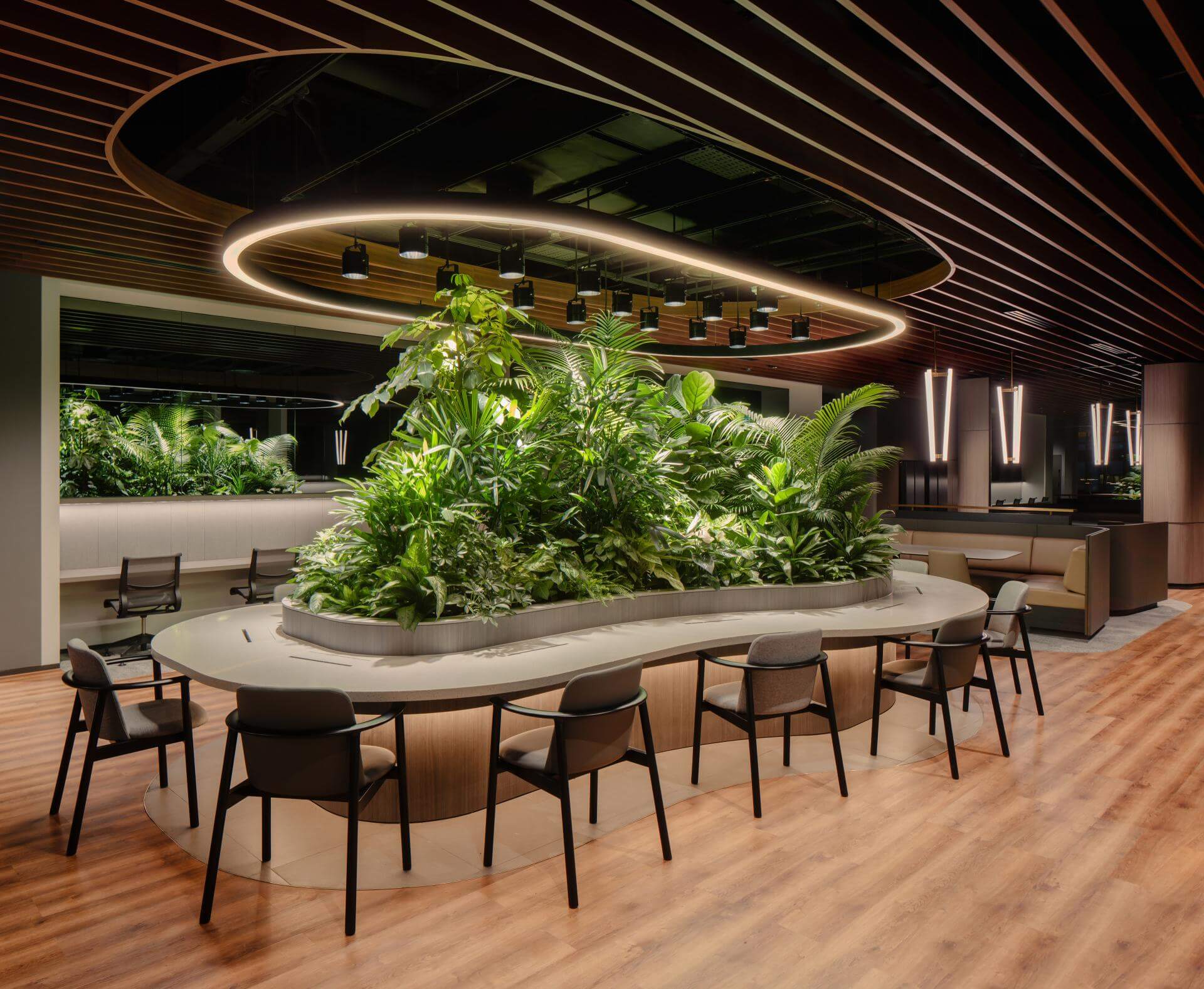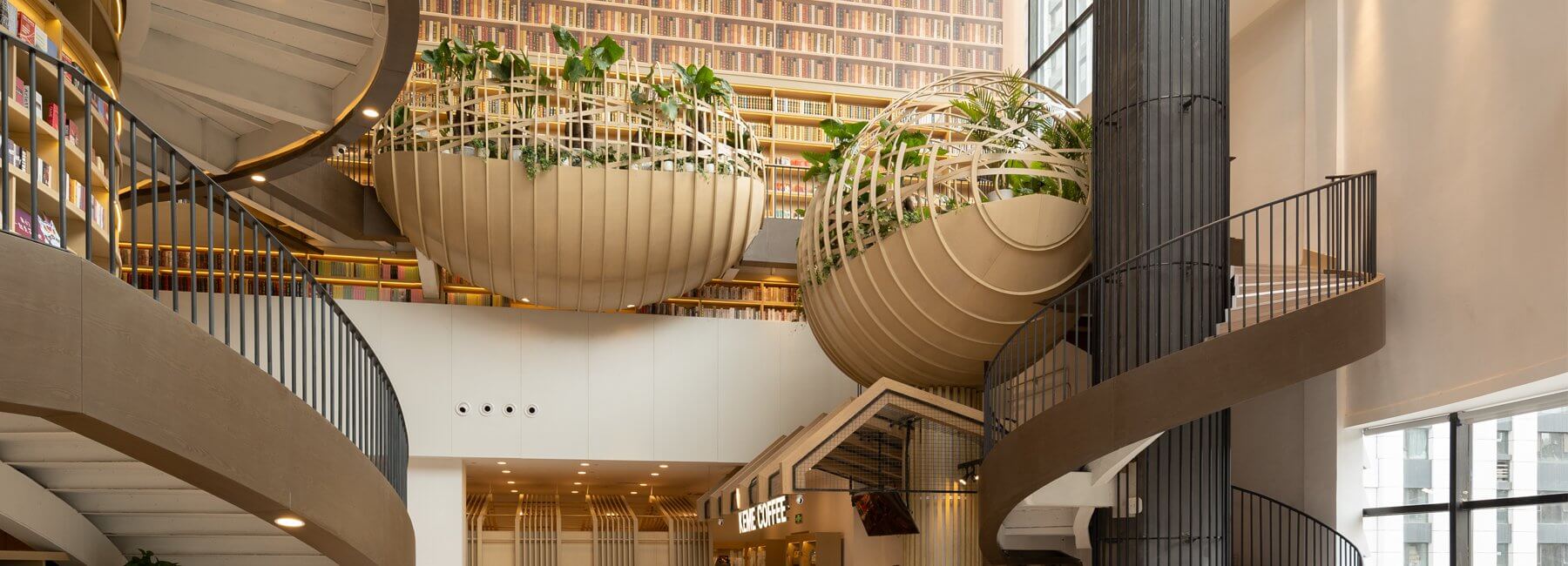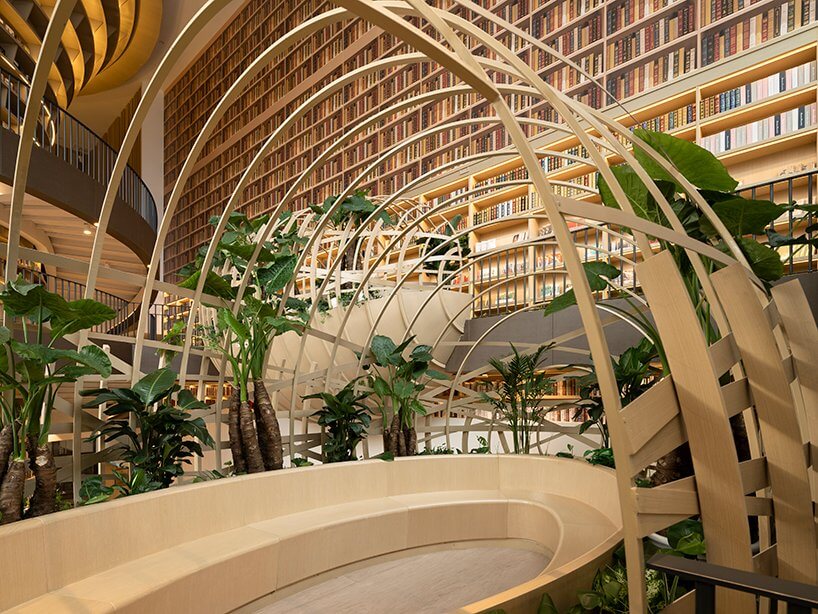The reconnection between urban spaces and nature is a trend that, in the design and retail industry, is here to stay.
Changes in buying trends vary overnight. Market and consumer volatility offers as many questions as opportunities. But there are things that do not change: that beyond the urban world in which we live, we can never leave aside the connection that human beings have with nature. And that also applies to the retail design industry. How? With the gradual implementation of biophilic design in each commercial space.
What is biophilic design?
“The love of life or living beings.” This is how biophilia is defined. This concept is based on the fact that contact with nature is key to human well-being because it is an innate connection and totally necessary for our development.
And it is man, forever linked to the natural world, who has undergone a change of life to urban environments that has taken him away from that essential connection, losing sight of the importance of being connected with our surroundings.
Therefore, what biophilic design proposes is the reestablishment of links between people and nature, betting on natural elements in our day to day. A solution to appease the need and desire to be in tune with the environment.
This type of design, as we will see later, improves health, brings positivity and energy, increases productivity and boosts audience ratings. And in the field of retail design, this trend will be the general trend in the coming decades.
Facts such as using biodegradable and natural materials, facilitating better air circulation or replicating elements of nature in indoor and / or commercial spaces will be the daily bread.

© Copyright. KARV ONE DESIGN LIMITED
Biophilic design principles applied to retail design
Biophilic design in the context of retail design, as well as in other fields, is fundamentally committed to three principles:
- Introduction of nature in space.
- Use elements equivalent to those of nature.
- Create natural spaces.
The introduction of nature into space is nothing more than the direct and clear presence of nature in commercial spaces, often through multisensory interactions. We talk about haptic, olfactory, visual, thermal sensations, etc. through the decorative elements. This nature in space therefore ranges from visual and non-visual connection to sensory stimuli, the presence of water or light games, among others.
The elements equivalent to those of nature are all indirect methods that help to reflect it in the store, such as the use of materials that appear to have been unaltered despite not being natural.
The key to this principle is to integrate analogous shapes in a way that looks as logical and enjoyable as possible through, for example, biomorphic shapes and patterns. In this case, the use of wood, minimizing the corners and sharp cuts in the space and betting on rounded shapes is one of the bases of this new environment, combining with plants and other elements.
Finally, the creation of spaces that are as natural as possible within the possibilities of the retail industry is the imitation or inspiration of spatial configurations based on nature. It is about achieving direct and indirect experiences through design strategies, generating mystery, perspective, a sense of refuge, etc.
This integration is equivalent to generating spaces where people want to buy, where they feel comfortable, but not only that; employees also take a step forward in terms of comfort and work environment.

© Copyright. KEVIN MAK / STUDIO1KM
An upward trend with multiple advantages
To understand the benefits of a biophilic design, you must first understand the drawbacks and problems associated with its absence.
To begin with, we can talk about the negative effects on health, productivity and well-being of being immersed in environments devoid of nature. This combination, together with the lack of attraction that can be generated in customers and consumers, translates into lower performance, lost time and higher costs. Not surprisingly, in countries like the United Kingdom, work-related stress represents one in three cases of health problems and almost half of absenteeism, costing companies more than 30,000 million euros a year.
Thus, there is a close and direct correlation between smart biophilic design of workspaces / commercials and higher performance and well-being. And its most plausible translation: consumers will develop a greater desire to enter and spend their precious time in retail stores, consequently generating an increase in sales.
Therefore, the main advantage of biophilic design is that the connection between employees – nature – clients leads to greater well-being, performance, inspiration and creativity, making better use of resources and betting on eco-circular economy and sustainability.
And it is that exposure to nature and sunlight lead the brain to release endorphins that improve mood and relax people’s attention, minimizing the risk of eyestrain and the monotony of more closed or darker spaces.
In sum, we can summarize the main benefits of this trend in:
- Reduction of stress and greater sense of relaxation
- Increased creativity and productivity
- Generation of well-being in each space

© Copyright. KHOOGJ
Practical examples of biophilic design
How is the commitment to biophilic design transferred in retail?
The beginning of this trend applied to retail is in something so simple, for example, how to incorporate colors and light tones to stores and furniture, adapting spaces with plant elements and plants, presence of vertical gardens, windows with open views, smells natural, a peaceful ambient sound …
A successful example of biophilic design is the M.I Bookstore in Harbin, China. It is an establishment designed to provide a unique experience at the reading level, with the seats lined with plants, transmitting total tranquility and betting on a wooden aesthetic that completely harmonizes the place.
This trend, no doubt, is not exclusive to retail. Amazon, without going any further, has made its headquarters in Seattle a monument to biophilia. Its building is made up of more than 40,000 plants and trees from all over planet Earth. And for biophilic architecture and design, you can never miss Singapore’s airport terminal and Gardens by the Bay.


© Copyright. eiichi kano
Practical applications in retail design
With the coronavirus pandemic, design based on biophilia has taken on another dimension.
Concern for the natural referents of human life has increased as never in recent times. And in this sense, retail has a lot to say, promoting shopping experiences for the consumer and for the human being, without forgetting the sales experience itself.
Beyond decorating a store, choosing colors, furniture or lighting, biophilic design in retail design consists of creating an authentic strategy with nature as the nerve center. By integrating analogies and natural principles into spaces, this type of design fully connects the urban environment with nature. And that, let’s not forget, is one of the great demands on the table.
Therefore, in the near future, the retail trade will have to bet on new ecosystems that try to maximize the use of sunlight and open spaces. That the limits between interior and exterior spaces are blurred. The warm natural tones, the use of wood, bronze and brass, and a deep conversion into a sustainable trade, will also be a “must”.
Beyond decorating a store, choosing colors, furniture or lighting, biophilic design in retail design consists of creating an authentic strategy with nature as the nerve center.
Follow us in Twitter and Linkedin, sign up to our newsletter and you will keep up to date with trends and issues related to retail.

